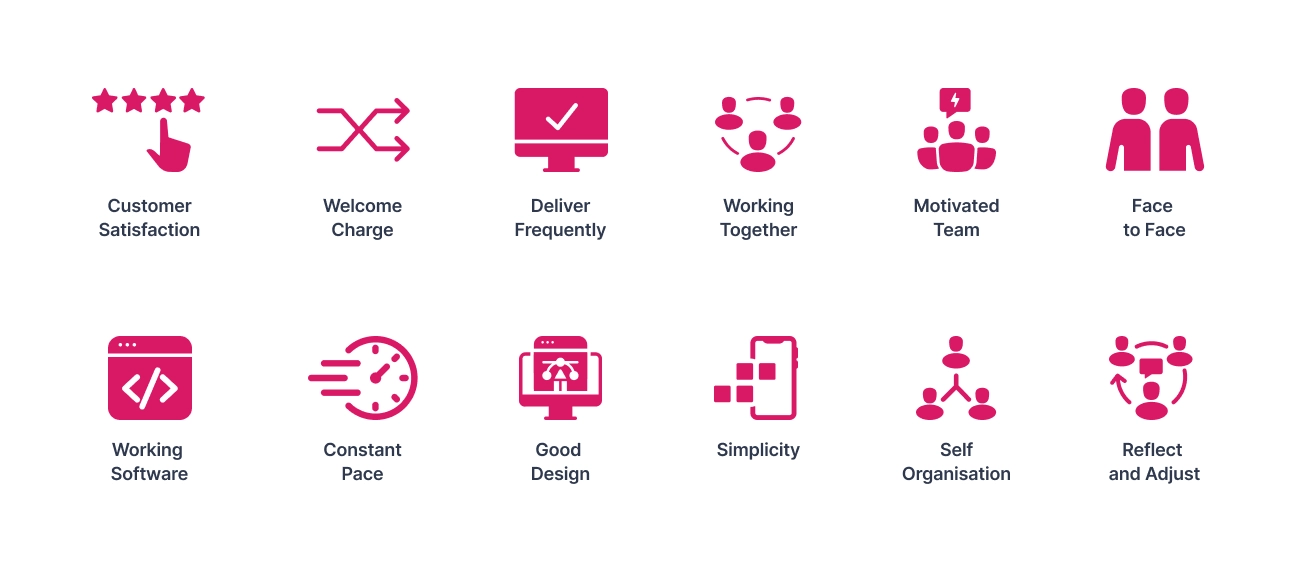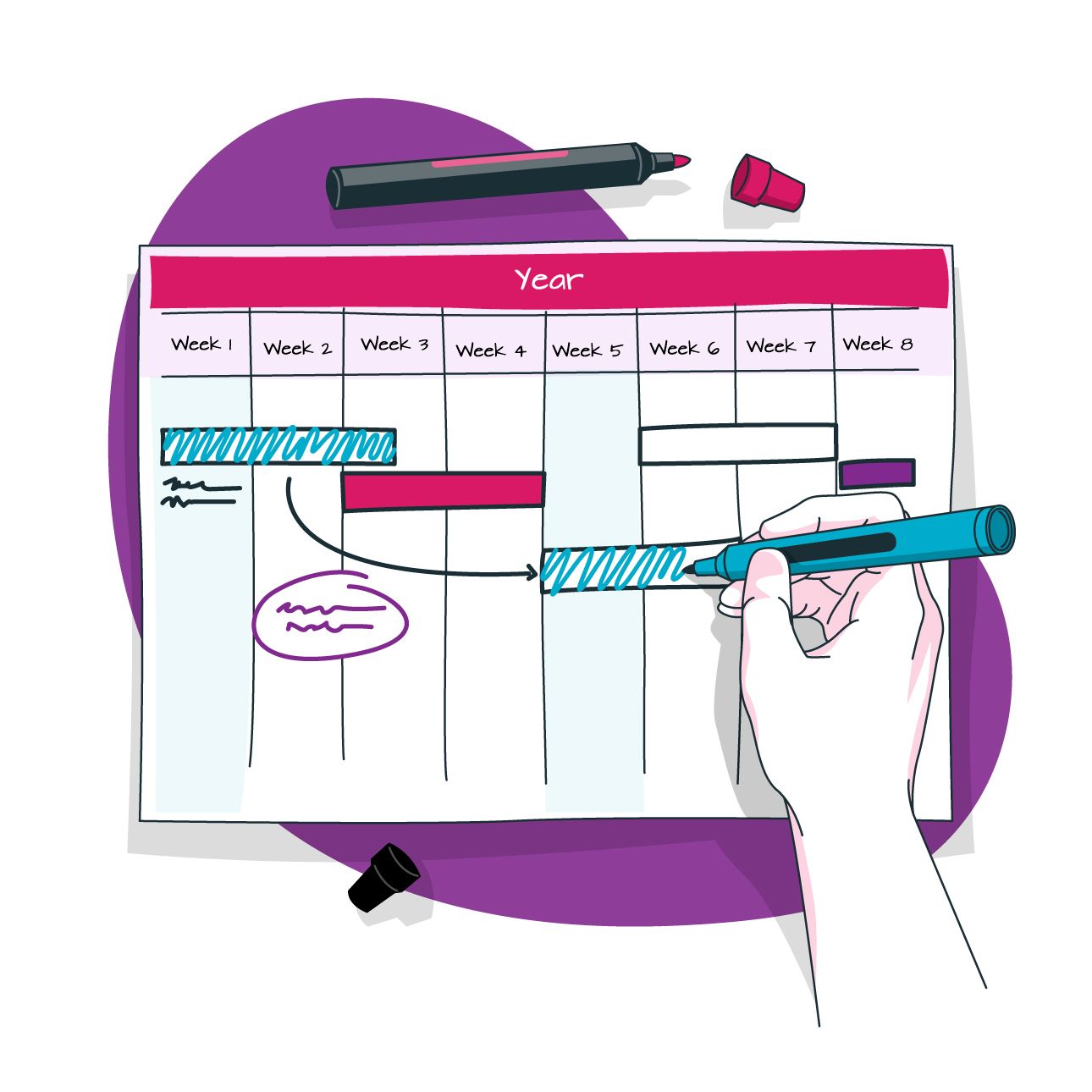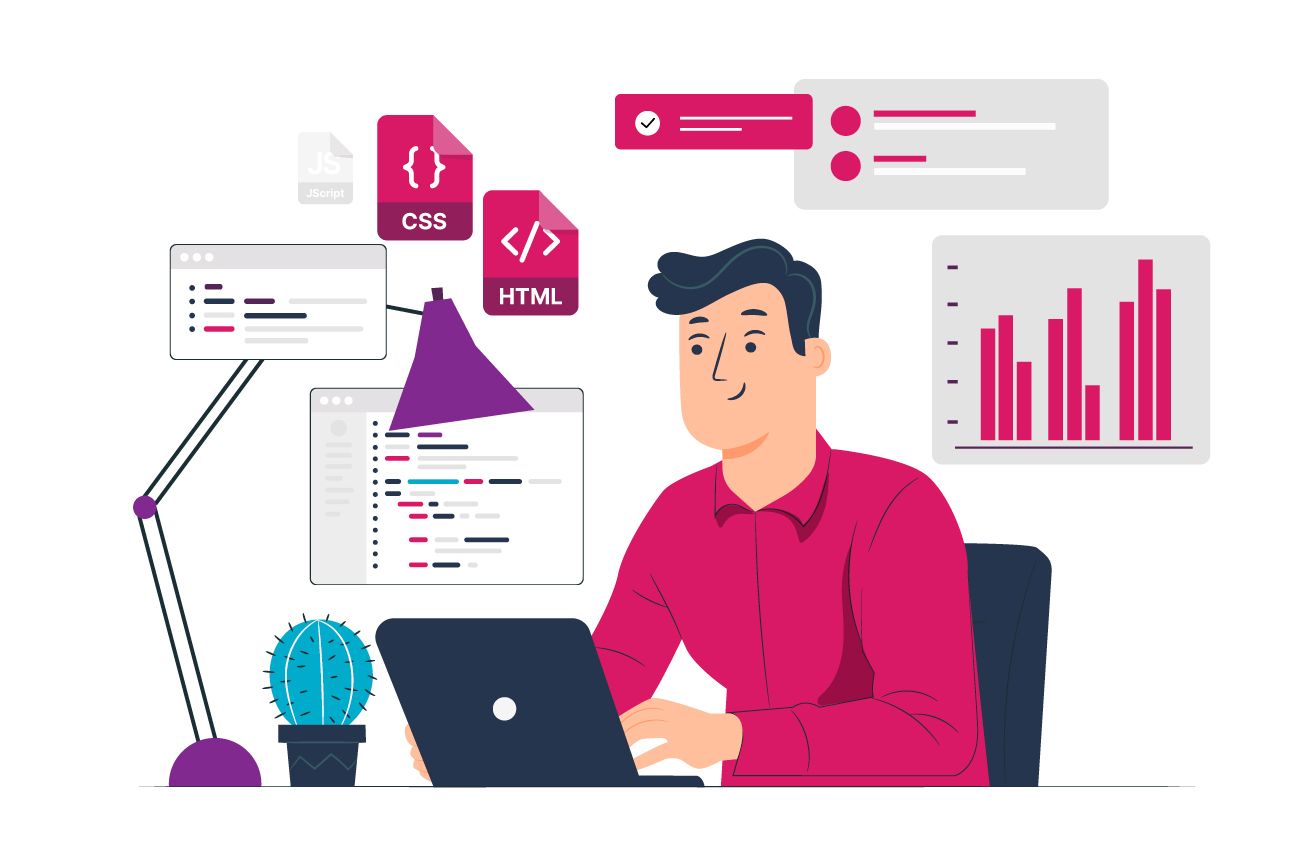

The 12 Key Principles of Agile Methodology
source link: https://dzone.com/articles/the-12-key-principles-of-agile-methodology
Go to the source link to view the article. You can view the picture content, updated content and better typesetting reading experience. If the link is broken, please click the button below to view the snapshot at that time.
The 12 Key Principles of Agile Methodology
The Agile Manifesto is the approach to software project management that helps companies to be more flexible, responsive, and ready to face new challenges.
Join the DZone community and get the full member experience.
Join For Free
Figure 1 12 Key Principles of Agile Methodology
Many customer requests changed during this lag, which led to the cancellation of many projects. As a result, in 2001, 17 leaders met and signed the Agile Manifesto to change the situation for the better. The Manifesto consists of four fundamental values and twelve principles that define the process of software development. Each team applies them differently, but they are an essential part of delivering high-quality software to businesses. The four values of the Agile Manifesto include:
- Individuals and interactions over processes and tools.
- Working software over comprehensive documentation.
- Customer collaboration over contract negotiation.
- Responding to change over following a plan.
These values are designed to make a software development process focused on quality and meeting customers’ needs.
The Twelve Agile Manifesto Principles
The 12 Agile principles support the core values by promoting a work environment that puts the customer first, gives structure to business goals, responds quickly to market forces, and changes in user needs. They also allow developer teams to modify each stage of the development process and make the environment comfortable for the team instead of needing to focus on the surrounding circumstances. The twelve principles of Agile development are presented below.
1. Customer Satisfaction Through Early and Continuous Software Delivery
As we can see, the satisfied customer is the top priority of all the 12 principles. Early and continuous delivery helps meet customers’ needs and increases the return on investment (ROI). Regularly receiving working software also makes customers much happier, as they are usually not huge fans of waiting for updates. By applying this principle, the software developers will be able to respond to challenges much faster.
2. Accommodate Changing Requirements Throughout the Development Process
It’s essential to meet the deadlines and avoid delays when a new condition appears or a new feature needs to be introduced. Requests to change something should not cause fear, even if they occur at the final stage of the project execution. Such customer demands should be met eagerly, as they are usually the most valuable ones.
3. Frequent Delivery of Working Software

Regular delivery of debugged software becomes possible when the whole development process is divided into smaller stages. In addition, this principle facilitates better validation of implemented ideas and approaches.
4. Collaboration Between the Business Stakeholders and Developers Throughout the Project
Regular collaboration between the business and the developer team significantly improves the quality of the decisions taken and makes the communication process between the stakeholders much easier. The main goal of this principle is to achieve the synergistic effect between the people who make software and those who use it for their purposes.
5. Support, Trust, and Motivate People Involved
Developers who don’t think about basic needs and have a comfortable working environment are more likely to operate better and achieve higher results. When motivated individuals get all the trust and support they need, the job is usually done well and on time.
6. Enable Face-to-Face Interactions

Having the opportunity to discuss different aspects of the development process in person makes communication between team members much more effective. Unfortunately, the COVID-19 pandemic restricted personal collaboration, and many software developers moved to an entirely online environment. This led to slowing down and postponing many projects.
7. Working Software Is the Primary Measure of Progress
Delivery of high-performing software to the customer is the main KPI for the team's performance assessment. It doesn’t matter how many sleepless nights were invested in the project, how many lines of code were written, or how many bugs were fixed. If the software doesn’t operate as initially expected, the work can’t be considered finished.
8. Agile Processes Support a Consistent Development Pace
Team members need to discuss and establish a maintainable rate at which they can comfortably operate and deliver working software regularly. When this principle is applied in practice, its primary goal is to avoid professional burnout and the necessity of heroic deeds. Optimization of basic processes is the solution.
9. Attention to Technical Detail and Design Enhances Agility

A well-chosen set of skills and design solutions allows the developer team to maintain the speed of the project, constantly improve the code, face the challenges, and respond to them effectively. All these aspects of the development process make it much more agile. Operational excellence makes the difference between a true professional and an ordinary team member.
10. Simplicity
Complex decisions can slow down the whole software development process. The amount of effort must be just enough to do the task at that time. It should be done this way if something can be done simply with a medium amount of action without losing quality. One important thing to remember is that the customers pay for the result, not hard work.
11. Self-Organizing Teams Encourage Great Architecture, Requirements, and Designs
Experienced and motivated teams who make decisions, take responsibility, regularly communicate, and share ideas can deliver high-quality solutions through a sustainable development process. The team that has to be pushed by its leader regularly should revise its whole approach.
12. Regular Reflections on How to Become More Effective
Last but not least, the twelfth principle states that constant personal growth, skill and process improvement, and self-organization are the key factors for efficient work and final success. Continuous improvement can be achieved through repeating the four basic steps: plan – do – check – and act. If something goes wrong, the team can always discuss it and move on.
Final Thoughts
The ultimate goal of Agile is to unite the software development process with business needs. Therefore, projects based on the Agile values and principles focus on the customers and encourage their direct involvement and participation. The implementation of the Agile Manifesto all over the software industry proved its effectiveness and positive impact on many methods.
Recommend
About Joyk
Aggregate valuable and interesting links.
Joyk means Joy of geeK